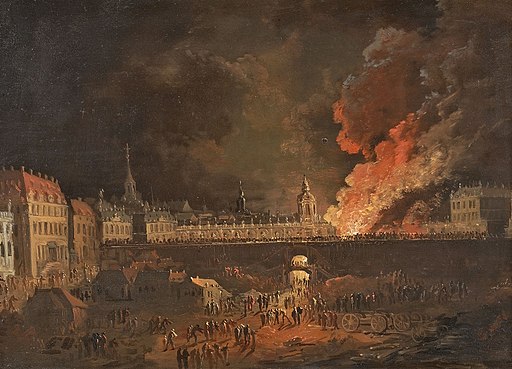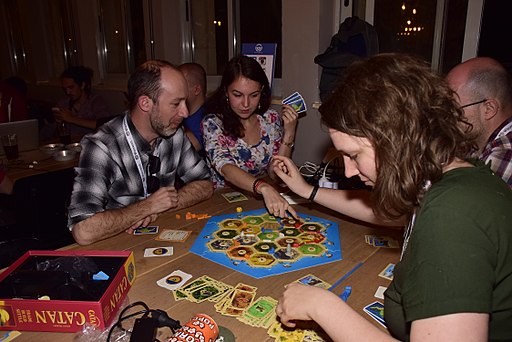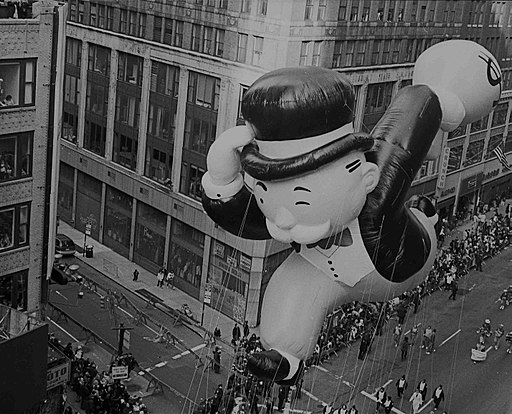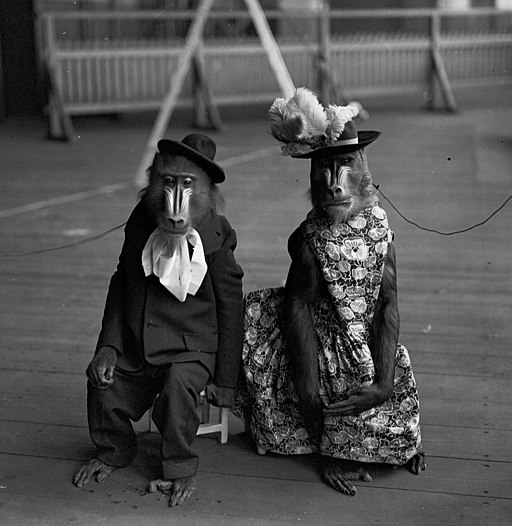A Pillar of Salt
— Job 38:4, from the King James Version of the Bible.
Today is the 50th anniversary of the publication of Kurt Vonnegut’s novel Slaughterhouse-Five, or The Children’s Crusade: A Duty-Dance with Death. Many Americans are probably familiar with it because it has been assigned reading in high schools when it hasn’t been banned or burned by the outraged and the self-righteous. Being assigned reading tends to sap some of the enjoyment of reading, and in that case it might be a good idea to read the book again voluntarily, as an adult.

An anonymous painting, possibly by Christian Wilhelm Ernst Dietrich (1712-1774), of a fire at Dresden Castle.
Slaughterhouse-Five was not revisionist history, but a necessary corrective to over two decades of mostly superficial accounts of World War II, at least in the popular media. It joined John Hersey’s 1946 non-fiction book Hiroshima in telling of war’s cost in suffering and the capacity for cruelty, alongside acts of kindness. In 1970, a non-fiction book written by Dee Brown, Bury My Heart at Wounded Knee: An Indian History of the American West, was published and changed the national discourse about relations with Native Americans, a discourse which had been dominated for over a century by white people of European descent demonizing them.
American prisoners caught in the Battle of the Bulge in December 1944 march to their quarters in Dresden, Germany. In February 1945, Allied air forces fire bombed the city, killing as many as 25,000 Germans, mostly women and children. The 1972 film, directed by George Roy Hill, starred Michael Sacks as Billy Pilgrim, the character based on Kurt Vonnegut, and Eugene Roche as his friend Edgar Derby, the ranking soldier among the prisoners.
Important works by great writers and historians come along infrequently and, while nothing and no one is ever perfect, their overall worth to humanity becomes even more apparent over time than at initial publication. Mark Twain’s 1885 novel Adventures of Huckleberry Finn, another great work that has stood the test of time, has also been subjected to periodic bouts of righteous indignation and banishment by different groups for divergent reasons over the years. Certainly we cringe today at some of its language and at the attitudes Mr. Twain portrayed, but many readers, perhaps most, understand that at the heart of the novel is the growing respect and friendship between a white boy and a black man, which in its day was a radical idea that undermined social conventions. We are all prisoners of our time and cannot, like Billy Pilgrim, the central character of Slaughterhouse-Five, become unstuck in time. But we can be charitable and preserve and cherish the greater Humanist vision given us by Kurt Vonnegut and other writers whose works have stood outside of time, imperfect as the writers and their works, like we and our works, will always be.
— Vita 


















